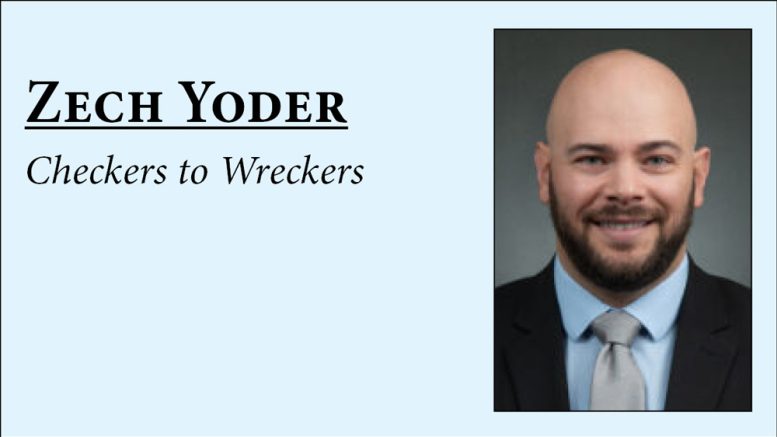By ZECH YODER
If the fireworks at the Closing Ceremony of the Paris Olympics were not enough entertainment for you, the NASCAR Cup Series race at Richmond on Sunday night surely satisfied your appetite for drama.
Austin Dillion’s last-lap whack-a-mole victory over Joey Logano and Denny Hamlin solidified himself a playoff spot – for all of three days – before NASCAR, in an unprecedented move, determined that Dillion’s win would not count toward playoff eligibility. Dillion’s antics on the last lap overshadowed a brilliant decision by NASCAR and the best Richmond race in years.
Coming into Richmond, the story was the short track package for the Cup Series. Except for the spring race at Bristol, the Gen 7 car has been abysmal on short tracks. Be it the lack of horsepower, the gear ratio and gearbox, the size of the tires, or a combination of each, short track racing sucked. NASCAR tried multiple aerodynamic packages to decrease downforce and make the cars more difficult to drive but nothing worked.
The spring race at Bristol may have been NASCAR’s saving grace. A fluke with the weather and track conditions caused the tires to wear much faster than expected. The result: great short track racing.
Finally, a solution appeared to be at hand.
Though the spring races at Richmond and Martinsville had the same Gen 7 short track problems, NASCAR was working on a solution. Its solution was revealed in the All-Star race at North Wilkesboro. There, NASCAR introduced an “option tire.” The option tire was much softer and therefore faster than the regular “primary tire.” However, because it was softer, the option tire would wear faster and quickly lose its competitive advantage. The All-Star test proved promising, and NASCAR decided to bring the option tire to Richmond.
Prior to the overtime escapades, the Richmond race can be summed up in one word: excellent. With only two sets of option tires available to the teams, strategy dominated the race. Although most teams opted for similar tire strategies, some made bold moves with the option tire. Daniel Suarez rocketed from the low teens to first place on only a handful of laps. His off-sequence tire strategy led to a Stage 2 win, an ever-important playoff point, and a top 10 finish. As Suarez demonstrated, the difference between the primary and option tire was drastic and created great racing.
NASCAR should be applauded for its decision to implement tire options into a points race. While it is not necessary for every track, the tire option could fix many of the problems associated with short tracks and road courses. NASCAR has listened to its fans and drivers and brought a reasonable solution to the race. I believe that these changes need to continue moving forward. Bristol, Martinsville, and Phoenix are playoff tracks. If Richmond was any indication, the two-tire option can promote the racing that we have been missing for the last few years.
My advice to NASCAR: don’t let off the gas now.
Zech Yoder is a local resident, an attorney at Adler Attorneys in Noblesville, and a lifelong race fan.

